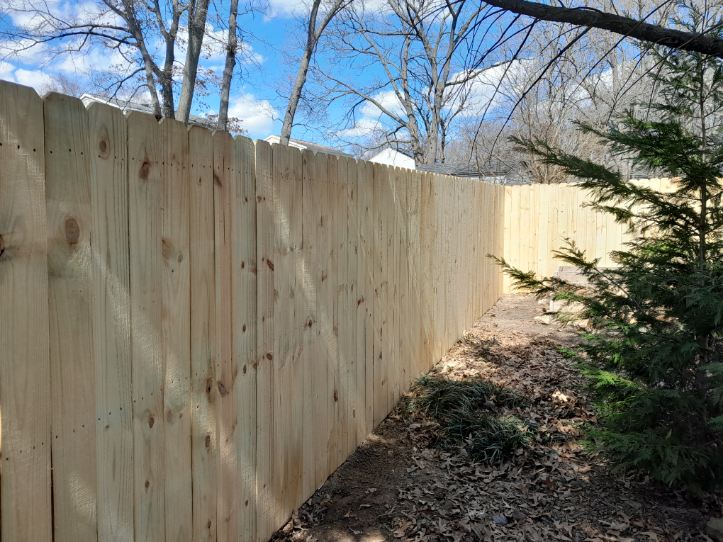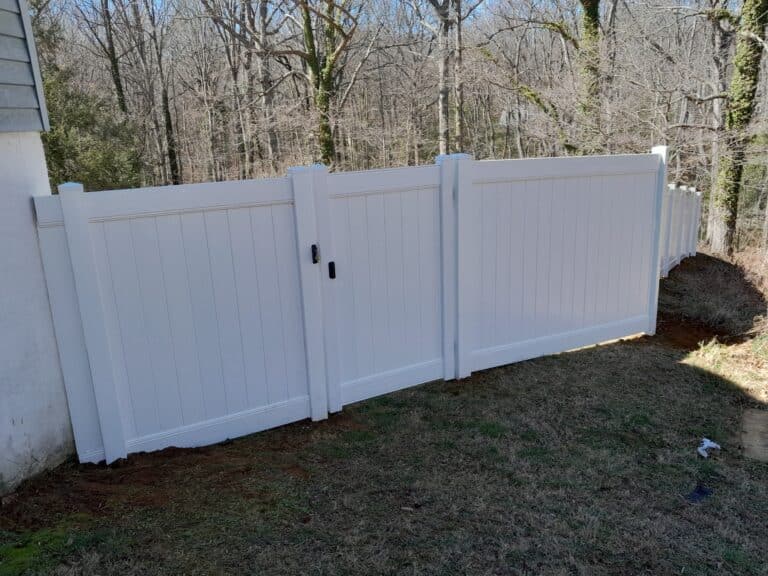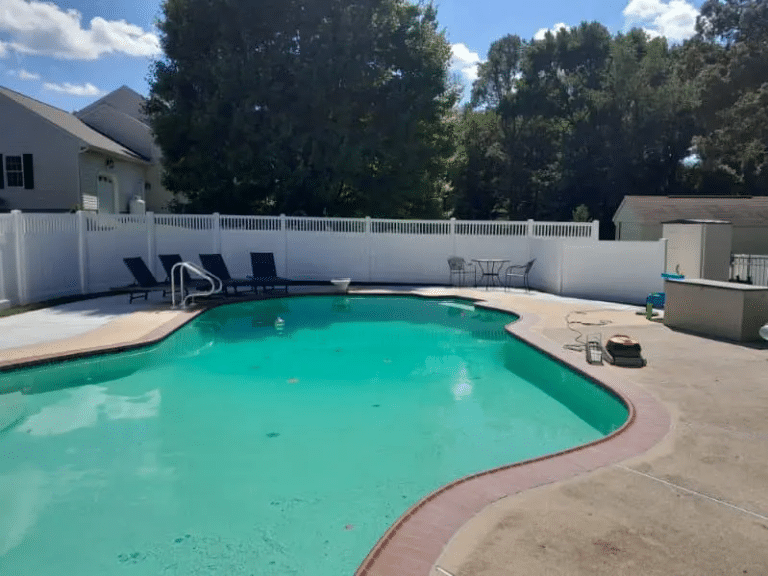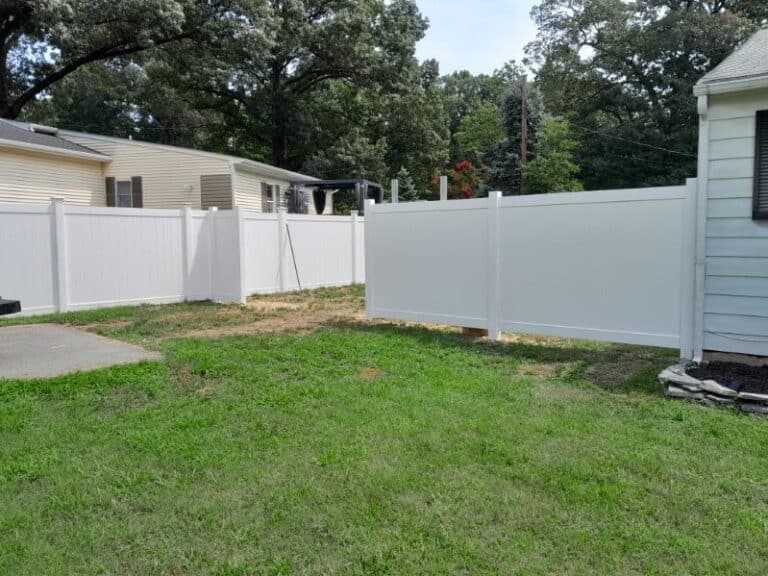All Around Fence has provided expert guidance to Altoona Beach and Maryland’s coastal communities for over 25 years.
Installing a fence near the water isn’t like installing one in your backyard. Altoona Beach’s sandy soil, salt air, and coastal storms create problems that catch most homeowners off guard. We’ve seen too many fences lean, shift, or fall down completely because they weren’t installed properly for coastal conditions.
Why Beach Sand Ruins Regular Fence Posts
Beach sand doesn’t hold fence posts like regular dirt does. The loose sand shifts and moves, especially when it gets wet from rain or storms. Salt water makes everything worse by getting into the soil and eating away at metal parts.
Most contractors don’t understand that coastal soil has water running through it all the time. When you dig a hole for a fence post, you’ll often hit water before you get deep enough. This water carries salt and changes how the soil behaves around your posts.
The sandy soil near the beach never really gets solid like clay or regular dirt. It stays loose and moves around, which means fence posts that seem solid at first will start to wobble and lean over time.
How Deep Your Posts Need to Go
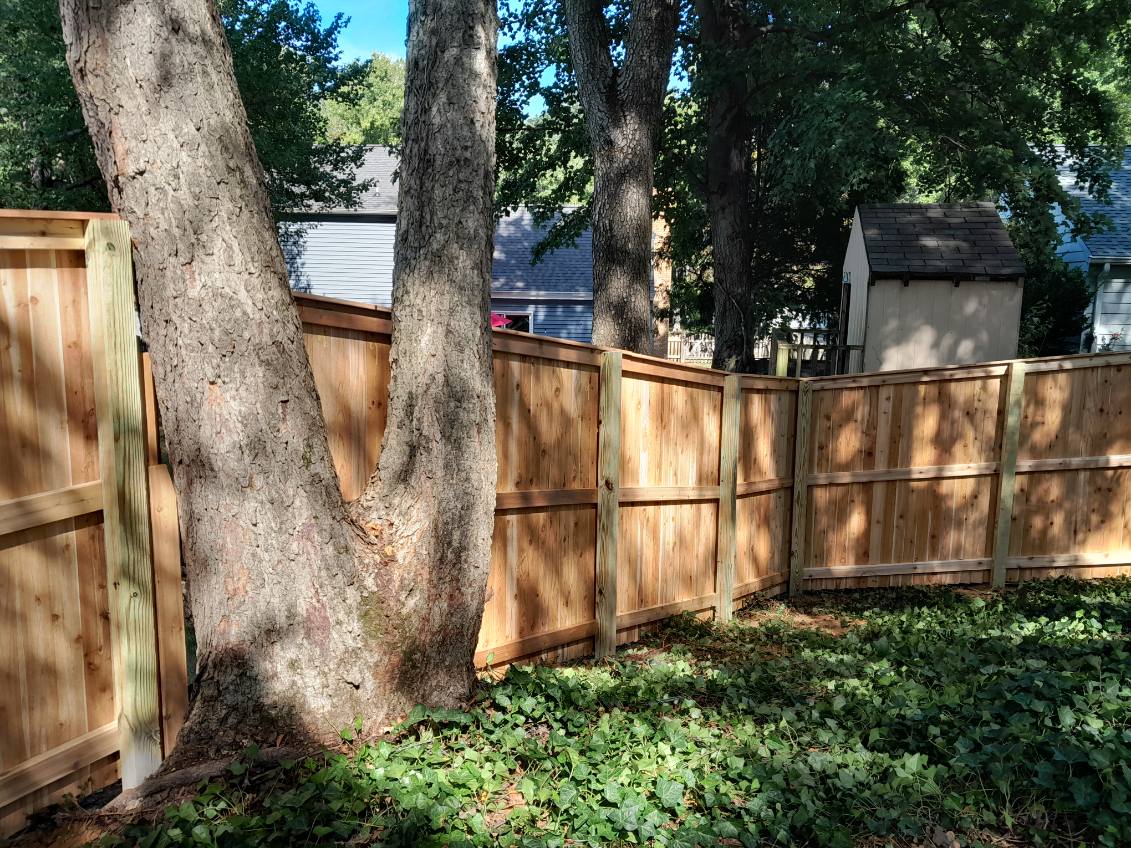
In coastal areas, fence posts must go deeper than normal. The rule is one-third of your fence height plus 6 inches minimum. So if you want a 6-foot fence, your posts need to go at least 30 inches into the ground.
But here’s the thing – that’s just the minimum. Near the beach, we usually go even deeper because the sand erodes and the posts can work loose during storms. It’s better to go too deep than not deep enough.
The extra depth helps your posts reach more stable sand that doesn’t shift as much. It also protects against erosion that can expose your posts over time, making them wobbly.
Concrete vs. Gravel: What Works Better
Most people think concrete is always the best choice, but that’s not true for coastal fences. Concrete can actually trap water around your posts, which causes rust and other problems.
When to use concrete: If you do use concrete, get the marine-grade type that resists salt damage. Regular concrete will break down quickly from salt exposure. You also need to slope the concrete so water runs away from the post.
Why gravel works better: Packing gravel and sand around posts often works better near the beach. The gravel drains water away naturally and moves slightly with the soil instead of cracking like concrete can. It’s also easier to fix later if something goes wrong.
Best approach: Many coastal installations work best with a combination – concrete at the bottom for stability and gravel on top for drainage.
Stopping Your Fence from Leaning
Beach wind and sand movement will try to push your fence over. Here’s how to prevent it:
Use bigger posts: Don’t use standard 4×4 posts near the beach. Go with 6×6 posts or larger. The bigger surface area grips the sand better and resists wind pressure.
Control erosion: Plant beach grass or other native plants around your fence. Their roots help hold the sand in place. You can also use rocks or small retaining walls to stop erosion.
Add cross-bracing: Connect your posts together with diagonal braces. When one post gets pressure, the others help support it.
Watch the water: Make sure water doesn’t pool around your fence posts. Install drainage or grade the ground so water flows away from your fence line.
Dealing with Salt Water Damage
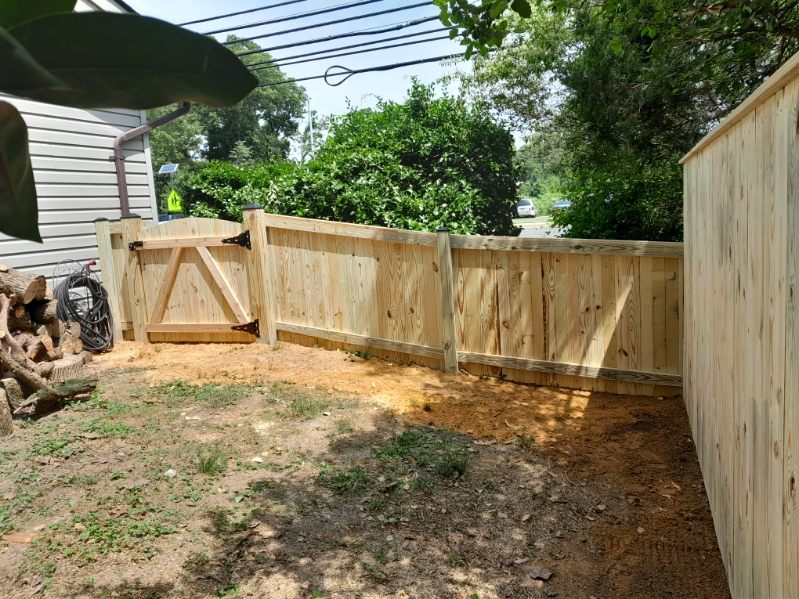
Salt destroys most fence materials quickly. Here’s what actually works:
Aluminum fencing handles saltwater best and looks good for years. It won’t rust or corrode like steel will.
Vinyl fencing also resists salt damage completely. The main concern is wind – make sure posts are deep enough and big enough to handle coastal storms.
Wood fencing can work if you use marine-grade pressure-treated lumber. Regular pressure-treated wood isn’t enough for coastal areas.
Hardware matters: Every screw, bolt, and bracket must be stainless steel rated for marine use. Regular galvanized hardware will rust out in months near salt water.
Maryland Coastal Weather Problems
Maryland’s coast gets hit with nor’easters, hurricanes, and constant wind. Your fence needs to handle all of this.
Wind loads: Coastal areas get much stronger winds than inland. Solid privacy fences catch wind like sails, so they need extra-strong installations. Sometimes chain link or semi-private designs work better.
Freeze and thaw: The wet coastal soil expands when it freezes, which can push your posts out of place. Good drainage prevents most of these problems.
Storm flooding: If your area floods during storms, your fence needs to survive being underwater temporarily. This means using materials that won’t be damaged by salt water soaking.
Drainage That Actually Works
Water management makes or breaks coastal fence installations.
Surface drainage: Grade your property so water flows away from fence posts. Even small puddles can cause big problems over time.
Underground drainage: French drains along your fence line prevent water from building up around posts. Use gravel that drains well and doesn’t hold water.
Natural flow: Don’t fight the natural water patterns on your property. Work with them by placing your fence where it won’t block drainage, especially in waterfront areas like Orchard Beach, check out our guide on Orchard Beach fence drainage and flood prevention.
Professional Installation Tips
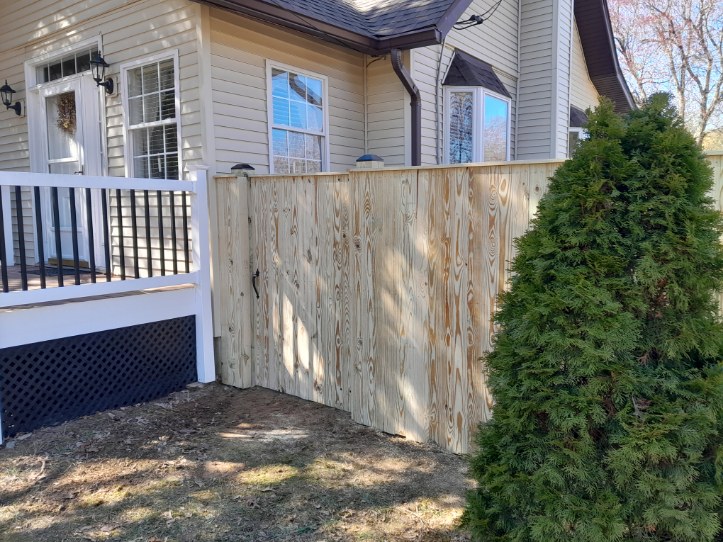
Coastal fence installation requires different techniques and equipment than regular fence work.
Soil testing: Test your soil before starting. Water table depth and sand composition vary even within small areas. What works for your neighbor might not work for you.
Proper equipment: Digging post holes in wet sand requires specialized equipment. Hand digging or regular augers often can’t reach proper depth or deal with water infiltration.
Timing matters: Install during dry weather when possible. Wet conditions make proper compaction and drainage setup much harder.
Frequently Asked Questions
How deep should fence posts be in coastal sand?
Posts need to go at least one-third of the fence height plus 6 inches deep. For a 6-foot fence, that means 30 inches minimum, but we often go deeper near the beach for extra stability.
Should I use concrete or gravel for setting posts in wet coastal soil?
Gravel usually works better because it drains naturally and moves with the soil. If you use concrete, get marine-grade concrete and make sure water can drain away from the posts.
What fence materials work best in saltwater environments?
Aluminum and vinyl resist salt damage best. If you want wood, use marine-grade pressure-treated lumber. All hardware must be stainless steel rated for marine use.
How can I prevent my coastal fence from leaning over time?
Use deeper posts, bigger post sizes, and control erosion around your fence. Plant beach grass or add drainage to keep sand stable around your posts.
Do coastal fences need special maintenance?
Yes. Rinse salt off metal parts regularly, check posts after storms, and keep drainage systems clear. Watch for erosion around posts and fix it quickly.
Get Your Coastal Fence Right the First Time
Don’t waste money on a fence that won’t last in coastal conditions. The right materials and installation techniques make all the difference between a fence that lasts decades and one that fails in a few years.
Ready for a fence built for coastal life? Call All Around Fence at (443) 838-9374. We understand Maryland’s coastal challenges and know what works. Our experienced team will help you choose the right materials and installation for your specific location.

